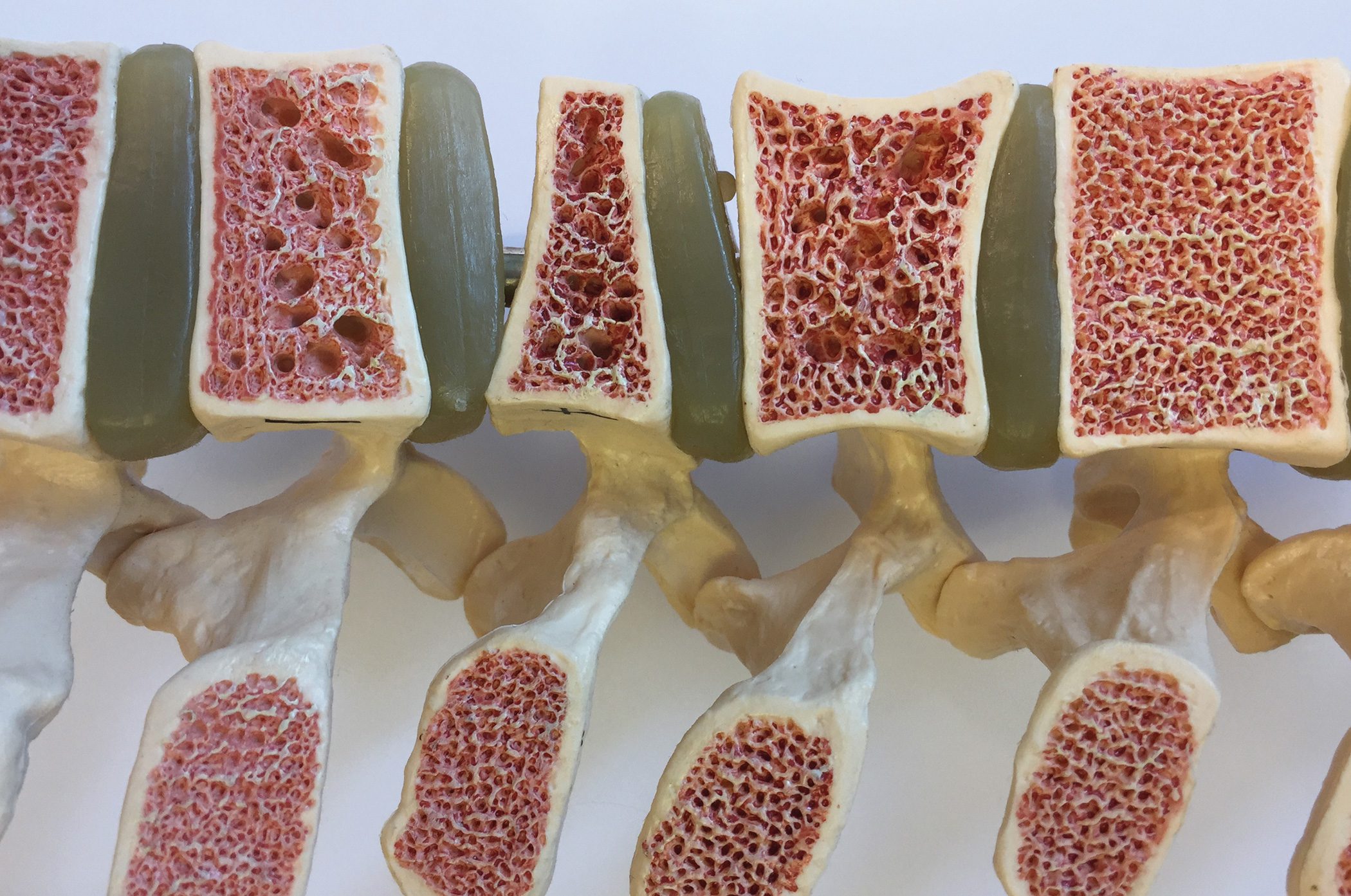Cardiometabolic disease (CMD), including diabetes, heart disease, and stroke, are established risk factors for dementia. Their combined effects were recently examined in a study. The aim was to investigate the relationship between cardiometabolic multimorbidity in middle and late life and dementia, and to explore the role of genetic background in this relationship.
Cardiometabolic diseases such as type 2 diabetes (T2D), heart disease (HD) and stroke [2,3] are a growing challenge in our aging society. This is because, due to increased life expectancy and continued advances in the treatment of cardiovascular disease and diabetes, people are living longer with CMD and are increasingly likely to suffer from one of these conditions during their lifetime [4]. Although CMD may be associated with dementia, understanding of the mechanisms underlying this association is still limited. Given the variability of CMD as chronic diseases with a potentially decade-long time course, it is currently unclear how dementia risk is affected by the timing of CMD development over the adult lifespan. It is also uncertain whether and to what extent genetic background contributes to the association between CMD and dementia.
Therefore, as part of the Swedish Twin Registry, 17 913 dementia-free individuals aged ≥60 years were recently followed for 18 years [1]. Twins are naturally matched pairs in which the confounding effects of a large number of potentially causal factors (e.g., genetics and early life environment) can be removed [8]. Therefore, it is possible to clarify the role of genetic background in the relationship between CMD and dementia by comparing the CMD-dementia associations observed in individual twins and in monozygotic (MZ) and dizygotic (DZ) twin pairs [9,10].
Cardiometabolic disease assessment
CMD was defined as T2D, HD, and stroke, following previous studies examining the impact of cardiometabolic multimorbidity on health outcomes [2,3,5–7,11–13]. T2D was identified on the basis of self-reported diabetes, records from the Swedish National Patient Register (NPR), and use of glucose-lowering medications according to the Swedish Medication Register. HD (including coronary artery disease, atrial fibrillation, and heart failure) and stroke (including ischemic stroke and hemorrhagic stroke) were based on NPR records. CMD status was defined based on participants’ total CMD at baseline and categorized as CMD-free, single CMD (T2D, HD, or stroke alone), or CMD multimorbidity (two or more comorbid CMDs). Furthermore, participants were additionally grouped according to their specific profile of single and comorbid CMD (CMD-free, T2D alone, HD alone, stroke alone, T2D/HD, HD/stroke, T2D/stroke, and T2D/HD/stroke). Age of onset of HD and stroke was defined by the earliest date of HD or stroke diagnosis in the NPR. The age of onset of T2D was estimated from the earliest date of T2D diagnosis in the NPR or the earliest date of glucose-lowering medication use in the Swedish Medicines Register, whichever came first. This information was used to determine the age at which participants were diagnosed with their first CMD and, in the case of CMD multimorbidity, their second CMD. The age of first and second CMD diagnosis was dichotomized, i.e., a distinction was made between whether the diagnosis was made in midlife (<60 years) or later in life (≥60 years).
Diagnosis dementia
The diagnosis of dementia was made based on records from the NPR. All recorded diagnoses were based on neurological examinations performed in neurological clinics. Dementia diagnoses were categorized as Alzheimer’s dementia (AD) and vascular dementia (VaD) using ICD** codes when information on dementia subtype was available. For participants who died without a dementia diagnosis during the follow-up period, dementia status was verified using information from the Swedish Cause of Death Register, which contains information on underlying and contributing causes of death.
**ICD = International Classification of Disease
Classic cohort study design
In the classic cohort study, the association between CMD and dementia should be estimated in the entire study population of twins, taking into account the age of onset of CMD (middle or late age). Cox regression models were used to estimate hazard ratios (HRs) and 95% confidence intervals (CIs) for dementia from all causes in participants with a single CMD or CMD multimorbidity compared with participants without CMD. Follow-up time (in years) was calculated as the time from study entry to dementia diagnosis, death, or last available follow-up (December 31, 2016). The proportionality assumption was tested using Schoenfeld residuals regressed against follow-up time. BMI was treated as a stratified factor in the model, so the baseline hazard function differed by BMI level. The model additionally included a sandwich estimator to correct for standard errors given clustering of twins within a pair. To determine whether increasing CMD burden had a dose-dependent effect on dementia risk, analyses were repeated using total CMD as a continuous variable. The analysis was also repeated after grouping participants according to their specific profiles of single and multiple CMD to examine the risk of dementia associated with specific constellations of comorbid CMD. To examine the impact of CMD on the subtypes of dementia, the cause-specific risks of AD and VaD, while censoring the development of other forms of dementia, were estimated. Finally, to assess how age affects dementia risk overall, the regression models were repeated after stratifying participants from a single or multiple CMD. Dementia risk was also assessed according to decade of CMD diagnosis (<50, ≥50 to <60, ≥60 to <70, ≥70 to <80, or ≥80 years).
Design of the matched twin study
The aim of the matched twin analysis was to investigate the role of genetic background in the association of CMD and dementia. Analysis was limited to twin pairs that were discordant for both CMD and dementia status. Twin pairs were excluded from 5345 complete twin pairs with known zygosity in the study population in which (i) both twins developed dementia or both twins remained dementia-free, (ii) both twins had CMD at baseline or both twins were CMD-free. This left 356 CMD and dementia discordant twin pairs. Each twin pair contained one CMD-free individual and one individual with baseline CMD scores, only one of whom later developed dementia. Among these twin pairs, zygosity-stratified Cox regression models were used to separately assess CMD-dementia association in DZ twins (n=302) and MZ twins (n=54). In addition, we examined whether the CMD-dementia association differed significantly as a function of zygosity by including the term of the cross product of these variables (zygosity × CMD status) in the model. While DZ twins share 50% of their genetic background, MZ twins share 100%. Therefore, the confounding influence of genetic background can be completely controlled in MZ pairs.
Cardiometabolic disease and the risk of dementia (AD & VaD).
At baseline, 3312 participants (18.5%) had a single CMD and 839 (4.7%) had CMD multimorbidity. Compared to participants without CMD, participants with CMD were more likely to be older, male, and single. Participants with CMD had a higher prevalence of overweight/obesity, depression, heavy alcohol use, current or former smoking, and physical inactivity. During the follow-up period (median 15.4 years), a total of 3020 participants (16.9%) developed dementia, including 1050 (5.9%) with AD and 638 (3.6%) with VaD. The presence of an increasing number of CMD was dose-dependently associated with a higher risk of dementia: with each additional CMD, the risk of dementia increased by 42% overall (HR: 1.42, 95% CI: 1.31-1.53), the risk of AD by 26% (HR: 1.26, 95% CI: 1.10-1.45), and the risk of VaD by 64% (HR: 1.64, 95% CI: 1.42-1.88). Compared with CMD-free individuals, individuals with a single CMD had a 42% increased risk of dementia (HR: 1.42, 95% CI: 1.27-1.58) and a significantly increased risk of both AD (HR: 1.31, 95% CI: 1.08-1.59) and VaD (HR: 1.78, 95% CI: 1.44-2.21). CMD multimorbidity was associated with more than twice the risk of dementia (HR: 2.10, 95% CI: 1.73-2.57), including a significant risk of AD (HR: 1.49, 95% CI: 1.02-2.20) and VaD (HR: 2.65, 95% CI: 1.83-3.84).
The association between specific constellations of comorbid CMD and dementia was also examined, with the result that any combination of T2D, HD, and stroke, whether alone or in combination, was associated with a significantly increased risk of dementia, AD, or VaD.
Cardiometabolic disease in middle and late life.
In analyses in which age at onset of CMD was considered, the later in life CMD occur, the smaller the risk effect of CMD on dementia. Dementia risk decreased by 11% for each decade of older age for developing a first CMD (HR: 0.89, 95% CI: 0.86-0.92) and by 16% for each decade of older age for developing a second CMD (HR: 0.84, 95% CI: 0.81-0.89).
In terms of life course, the risk of dementia was higher when the first CMD diagnosis was made in midlife (HR: 1.64, 95% CI: 1.40-1.94) than in the later years of life (HR: 1.46, 95% CI: 1.30-1.63). In addition, the risk of dementia appeared to be higher in those who developed a second CMD in midlife (HR: 2.21, 95% CI: 1.34-3.65) than in late life (HR: 1.81, 95% CI: 1.52-2.17) (Fig. 1) [1]. A similar pattern of results was observed for VaD, but not for AD.

The role of genetic background
In matched twin analysis, the significant association between CMD and dementia revealed in the classic cohort study design (HR: 1.51, 95% CI: 1.37-1.66) persisted in CMD- and dementia-discordant DZ twin pairs (n=302 pairs; HR: 1.55, 95% CI: 1.15-2.09), but was attenuated in CMD- and dementia-discordant MZ twins (n=54 pairs; HR: 0.99, 95% CI: 0.50-1.98). The results suggest that the common genetic background of CMD and dementia may underlie the CMD-dementia association. As further evidence that the strength of the CMD-dementia association differs between MZ and DZ twins, a significant interaction was found between zygosity and CMD status on dementia risk (p=0.005).
Cardiometabolic multimorbidity and its consequences.
The Nationwide Twin Study shows that CMD, especially when they develop in midlife, increase the risk of dementia, including Alzheimer’s disease and VaD. These findings add to the growing evidence for an association between cardiometabolic multimorbidity and both vascular and neurodegenerative forms of dementia and highlight the need for special surveillance of individuals who develop T2D, Huntington disease, or stroke in midlife to reduce their risk of developing dementia in older age. Using a twin study design, evidence was also provided that a genetic background may underpin the association between cardiometabolic disease and dementia. The results call for the identification of these common genes for CMD and dementia in future studies.
Cardiometabolic multimorbidity could contribute to vascular and neurodegenerative brain pathologies through multiple overlapping mechanisms. The chronic hyperglycemia that characterizes T2D contributes to oxidative stress-a process that underlies both cerebral atherosclerosis and neurodegeneration-and may also lead directly to neuronal death through its toxic effects on the myelin sheath [14]. Another pathophysiological feature of T2D, cerebral insulin resistance, has been linked to tau hyperphosphorylation and increased amyloid-β formation [14]. In addition, chronic cerebral hypoperfusion-a consequence of stroke or decreased cardiac output due to Huntington’s disease-can alter cerebral blood flow velocity, contributing to the development of vascular brain lesions [15]. Cerebral hypoperfusion could also induce brain hypoxia, which may impair peptide clearance and promote amyloid-β deposition [16]. In addition, the endothelial dysfunction characteristic of CMD may disrupt the integrity of the blood-brain barrier, resulting in impaired amyloid-β clearance [17]. At the intersection of many of these mechanisms is inflammation, which plays a well-known role in the pathogenesis of CMD [18] and can accelerate the progression of both neurodegenerative and vascular brain pathologies [19,20]. Elucidating the mechanisms by which cardiometabolic multimorbidity affects dementia will require future studies that integrate longitudinal measures of cognitive function with neuropathological, genetic, and biomarker data.
Take-Home Messages
- Dementia risk increased in a dose-dependent manner with a greater number of comorbid cardio-metabolic diseases (CMD) and was higher in individuals who developed CMD earlier in the life course.
- The association between CMD and dementia was attenuated in monozygotic twins, suggesting common genetic factors for CMD and dementia.
- Cardiometabolic multimorbidity increases the risk of dementia; this could be supported by a genetic background.
- Prevention of CMD, especially in midlife, could be a strategy to prevent or delay the development of dementia.
Literature:
- Dove A, et al.: Cardiometabolic multimorbidity and incident dementia: the Swedish twin registry. EurHeartJ 2023. https://doi.org/10.1093/eurheartj/ehac744
- Keenan T, Zhao W, Rasheed A, et al.: Causal assessment of serum urate levels in cardiometabolic diseases through a Mendelian randomization study.
J Am Coll Cardiol 2016;67: 407–416.
https://doi.org/10.1016/j.jacc.2015.10.086 - Sattar N, Gill JMR, Alazawi W: Improving prevention strategies for cardiometabolic disease. Nat Med 2020; 26: 320–325.
https://doi.org/10.1038/s41591-020-0786-7 - Xu X, Mishra GD, Dobson AJ, Jones M: Progression of diabetes, heart disease, and stroke multimorbidity in middle-aged women: a 20-year cohort study. PLoS Med 2018;15: e1002516.
https://doi.org/10.1371/journal.pmed.1002516 - Gerdts E, Regitz-Zagrosek V: Sex differences in cardiometabolic disorders. Nat Med 2019;25: 1657–1666. https://doi.org/10.1038/s41591-019-0643-8
- Livingston G, Huntley J, Sommerlad A, et al.: Dementia prevention, intervention, and care: 2020 report of the Lancet Commission. Lancet 2020;396: 413–446. https://doi.org/10.1016/S0140-6736(20)30367-6
- Wang Z, Marseglia A, Shang Y, et al.: Leisure activity and social integration mitigate the risk of dementia related to cardiometabolic diseases: a population-based longitudinal study. Alzheimer’s Dement 2020;16: 316–325.
https://doi.org/10.1016/j.jalz.2019.09.003 - Dove A, Marseglia A, Shang Y, et al: Cardiometabolic multimorbidity accelerates cognitive decline and dementia progression. Alzheimer’s Dement 2022: 1-10. https://doi.org/10.1002/alz.12708.
- Tai XY, Veldsman M, Lyall DM, et al: Cardiometabolic multimorbidity, genetic risk, and dementia: a prospective cohort study. Lancet Healthy Longev 2022;3: e428-e436. https://doi.org/10.1016/S2666-7568(22)00117-9
- Fernández-Rhodes L, Young KL, Lilly AG, et al: Importance of genetic studies of cardiometabolic disease in diverse populations. Circ Res 2020;126: 1816-1840. https://doi.org/10.1161/CIRCRESAHA.120.315893
- Fan J, Tao W, Li X, et al.: The contribution of genetic factors to cognitive impairment and dementia: apolipoprotein E gene, gene interactions, and polygenic risk. Int J Mol Sci 2019;20: 1177. https://doi.org/10.3390/ijms20051177
- Jansen IE, Savage JE, Watanabe K, et al: Genome-wide meta-analysis identifies new loci and functional pathways influencing Alzheimer’s disease risk. Nat Genet 2019;51: 404-413. https://doi.org/10.1038/s41588-018-0311-9
- Lichtenstein P, de Faire U, Floderus B, et al: The Swedish twin registry: a unique resource for clinical, epidemiological and genetic studies. J Intern Med 2002;252: 184-205. https://doi.org/10.1046/j.1365-2796.2002.01032.x
- Biessels GJ, Despa F: Cognitive decline and dementia in diabetes mellitus: mechanisms and clinical implications. Nat Rev Endocrinol 2018; 14: 591-604. https://doi.org/10.1038/s41574-018-0048-7.
- Pase MP, Grima NA, Stough CK, et al: Cardiovascular disease risk and cerebral blood flow velocity. Stroke 2012; 43: 2803-2805.
https://doi.org/10.1161/STROKEAHA.112.666727. - Dotti CG, De Strooper B: Alzheimer’s dementia by circulation disorders: when trees hide the forest. Nat Cell Biol 2009;11:114–116.
https://doi.org/10.1038/ncb0209-114. - Zuo W, Wu J: The interaction and pathogenesis between cognitive impairment and common cardiovascular diseases in the elderly. Ther Adv Chronic Dis 2022;13: 204062232110630.
https://doi.org/10.1177/20406223211063020. - Donath MY, Meier DT, Böni-Schnetzler M: Inflammation in the pathophysiology and therapy of cardiometabolic disease. Endocr Rev 2019;40:1080–1091. https://doi.org/10.1210/er.2019-00002.
- Sankowski R, Mader S, Valdés-Ferrer SI: Systemic inflammation and the brain: novel roles of genetic, molecular, and environmental cues as drivers of neurodegeneration. Front Cell Neurosci 2015;9:28. https://doi.org/10.3389/fncel.2015.00028.
- Heneka MT, Carson MJ, El Khoury J, et al.: Neuroinflammation in Alzheimer’s disease. Lancet Neurol 2015;14: 388–405.
https://doi.org/10.1016/S1474-4422(15)70016-5.
CARDIOVASC 2023; 22(1): 18–20












